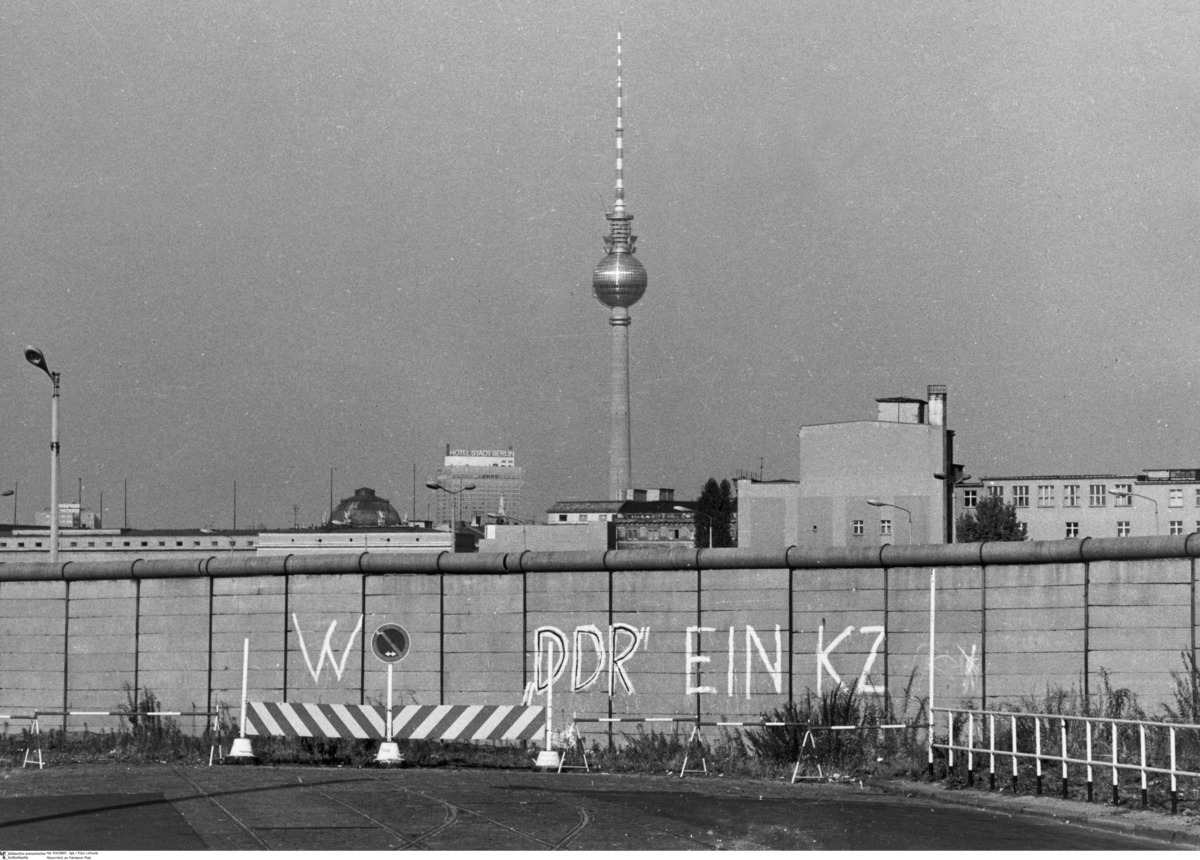Abstract
As a direct response to the construction of the Berlin Wall on August
13, 1961, Berliners in East and West often used the term “KZ”
(concentration camp) to describe the situation in the GDR. Similarly,
when the West German media reported on the failed escape and agonizing
death of construction worker Peter Fechter on August 17, 1962, it
referred to GDR border guards as “Ulbricht’s concentration camp
henchmen” and “concentration camp guards.” In West Germany, the equation
of the National Socialist and Communist dictatorships can be viewed
within the context of an anti-totalitarian consensus. Yet this
association was also made in the GDR, as evidenced by the oppositional
“Manifesto of the Association of Democratic Communists,” which was
published in Der Spiegel in January
1977. In it, the authors called the mine fields and spring guns at the
inter-German border “concentration camp killing machines.” This picture
shows a section of the Berlin Wall at Potsdamer Platz; the television
tower on East Berlin’s Alexanderplatz can be seen in the background. The
spray-painted message is simple and clear: “GDR” – A Concentration
Camp.
